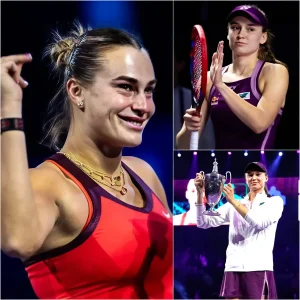Toto Wolff’s $6 Billion Mercedes Stake Sale Bombshell: F1’s Financial Tsunami Peaks as Team Boss Cashes In – A Masterstroke or Exit Signal?
In a move that’s rewriting the economics of Formula 1 faster than a qualifying lap at Monza, Mercedes boss Toto Wolff is poised to offload a slice of his empire for a jaw-dropping windfall, valuing the Silver Arrows at a record-shattering $6 billion. The Austrian maestro – architect of eight straight constructors’ titles and Lewis Hamilton’s seven crowns – is in advanced talks to sell approximately 5% of his 33% stake through his holding company, pocketing around $300 million in the process. Far from a fire sale or fading passion, this is savvy capitalism at its peak: Wolff, 53, retains operational control as CEO and team principal, with governance unchanged and his major partners – Mercedes-Benz and INEOS – locked in for the long haul. As F1’s valuation supernova blazes brighter under Liberty Media’s stewardship, Wolff’s masterstroke underscores a sport transformed from billionaire’s folly to Wall Street darling, but whispers linger: is this liquidity for legacy-building, or the first crack in Mercedes’ armor amid a resurgent grid?

The deal, first revealed by Sportico and corroborated by Reuters, Financial Times, and Sky Sports, marks F1’s highest team valuation ever – eclipsing McLaren’s $4.7 billion September stake sale by MSP Sports Capital (a 10x return in five years) and Aston Martin’s $3 billion minority float from Lawrence Stroll’s 2018 $117 million buy-in (a 28x multiplier in seven years). Wolff’s windfall? A staggering 36x return on his 2013 investment: back then, his one-third slice cost $55 million in a team valued at $165 million. Fast-forward 12 years, and that stake balloons to $2 billion, with this mid-single-digit carve-out – structured via Wolff’s Marchfifteen entity – injecting fresh capital without diluting control. A Mercedes spokesperson confirmed to ESPN: “Governance remains unchanged; all three partners – Mercedes-Benz, Toto, and INEOS – are fully committed to ongoing success.” Wolff stays at the helm, steering George Russell and rookie Kimi Antonelli toward a 2026 resurgence post-Hamilton’s Ferrari defection.

The buyer? George Kurtz, co-founder and CEO of cybersecurity titan CrowdStrike – already a Mercedes staple with logos emblazoned on the W16’s nosecone and race suits since 2023. Kurtz, a Le Mans endurance racer himself, deepens an existing alliance: CrowdStrike’s $3 billion+ annual revenue and F1 affinity (sponsoring events like the Las Vegas GP) make him a seamless fit. “No outside disruptor – just evolution,” Wolff told Bloomberg, emphasizing the transaction’s stability. This isn’t distress; it’s diversification at F1’s zenith. Mercedes’ 2024 financials – $812 million revenue (F1’s highest), $164 million profit, and $163 million dividends split among owners – underscore the bounty. Wolff’s personal haul? Over $50 million in salary and dividends last year alone, per filings.

What ignited this valuation vortex? A perfect storm of Liberty Media’s alchemy since their 2017 $4.4 billion acquisition. Drive to Survive – Netflix’s addictive docuseries where Wolff emerged as the chain-smoking, quotable anti-hero – exploded U.S. viewership by 200%, injecting $500 million+ in new sponsorships (e.g., crypto’s OKX, Google’s YouTube). Races like Miami (2022 debut) and Las Vegas (2023 spectacle, outpacing the Super Bowl economically) sold out, while the cost cap – capping spends at $145 million – flipped teams from money pits (Renault’s 2015 £1 Lotus buy) to profit machines. Broadcasting windfalls – Apple’s rumored $1.5 billion U.S. deal – and global expansion (25 races, 500 million fans) have minted F1 a $20 billion+ asset class. Wolff’s prescience? Spot-on: from 2013 underdog to hybrid hegemon, then 2022-2024’s “grind” yielding second in 2025 constructors’ (two wins via Russell).
Yet, amid the champagne, shadows flicker. Mercedes’ post-Red Bull era – fourth in 2024, a “transitional” 2025 with Antonelli’s teething – tests Wolff’s mettle. Stake sale signals confidence, but skeptics murmur: liquidity for a 2026 engine revamp? Or hedging against Hamilton’s Ferrari flight and Russell’s pressure? INEOS’s Jim Ratcliffe (Man United co-owner) shelled $272 million for his third in 2022; Kurtz’s outlay for 5% dwarfs it, a sixfold spike in four years. F1’s investor influx – U.S. heavyweights eyeing Red Bull, Alpine – hints at a bubble, but Wolff dismisses: “F1’s no fad – it’s forever.”
The ripple? Monumental. Stake sales cascade: McLaren’s MSP exit, Aston’s float. Teams morph from passion plays to portfolios, luring VCs chasing 10x-30x ROIs. Liberty’s Greg Maffei beams: “F1’s a $20B ecosystem – Wolff’s deal proves maturity.” For Wolff, it’s vindication: from Williams investor (pre-2013) to F1’s shrewdest suit. As Abu Dhabi’s finale nears November 30, Mercedes eyes constructors’ silver – but Wolff’s wallet gleams brighter. In F1’s gilded garage, where speed meets spreadsheets, his $300M slice isn’t exit – it’s elevation. The sport’s boom? Just revving up.
Abu Dhabi GP: November 28-30. Live on ESPN/F1 TV. #WolffStakeSale #F1ValuationBoom #MercedesMillions 🏁💰






